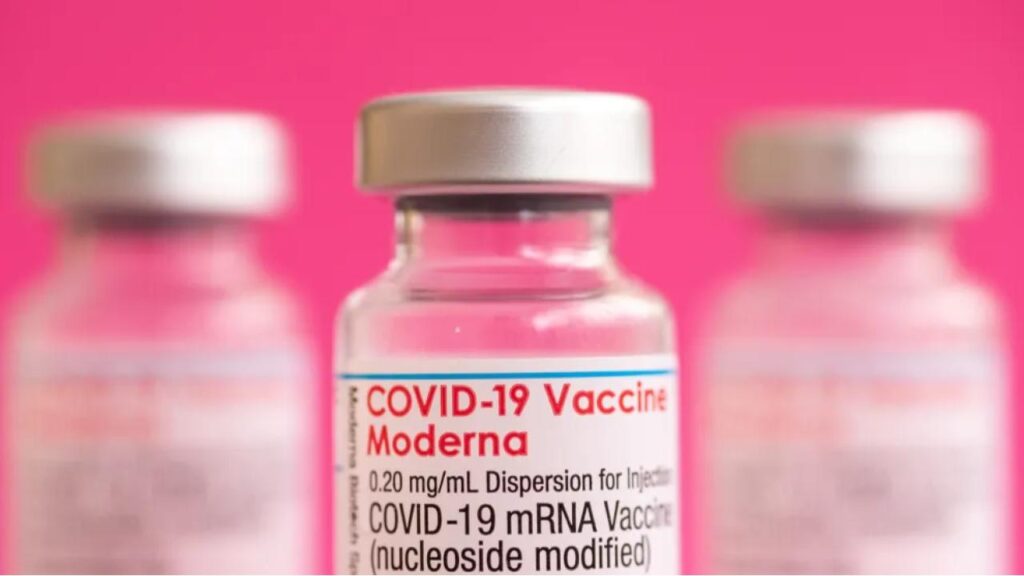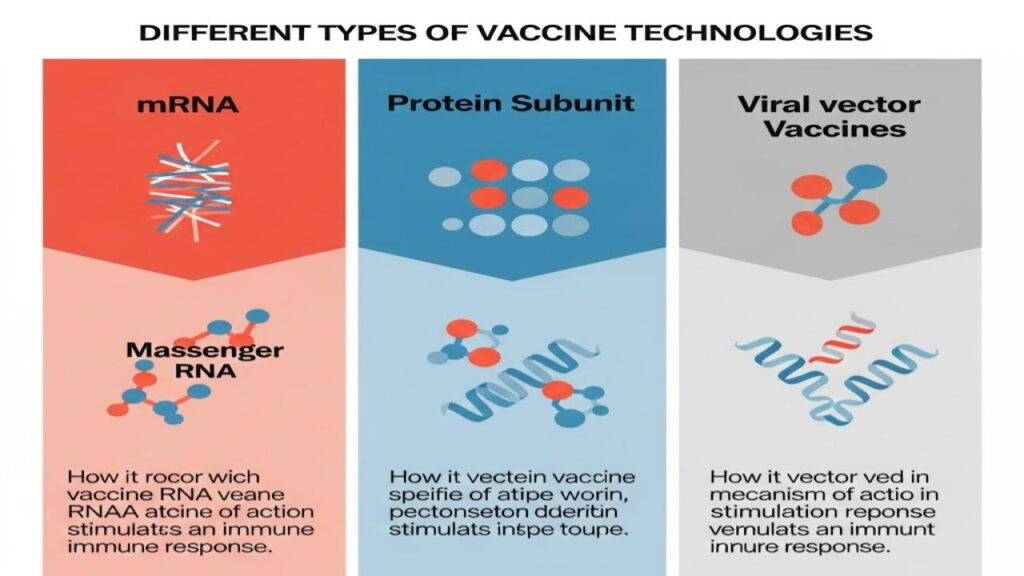The FDA just approved a brand-new COVID vaccine, but here’s the kicker—it’s not for everyone. Moderna’s next-generation vaccine, mNEXSPIKE, is now officially cleared, but only for select high-risk groups. If you’re under 65 and relatively healthy, you’re gonna have to wait this one out—for now.

Let’s break down what this vaccine is, who can get it, and how this limited rollout affects insurance, workplaces, and public health. Whether you’re trying to stay safe this fall or just want straight answers, this guide’s got you covered.
New COVID Vaccine Approved
| Feature | Details |
|---|---|
| Vaccine Name | mNEXSPIKE |
| Manufacturer | Moderna |
| FDA Approval Date | May 31, 2025 |
| Eligibility | Adults 65+ and high-risk individuals aged 12–64 |
| Availability | Fall 2025 |
| What’s New | Targets recent variants, offers longer-lasting protection |
| FDA Policy Change | Requires randomized trials before use in healthy under-65 group |
| Original Spikevax | Still available for all, but targets outdated variants |
The FDA’s approval of Moderna’s mNEXSPIKE COVID-19 vaccine marks a big turning point in how we tackle the virus moving forward. Rather than blanket approvals, the U.S. is focusing on evidence-based protection—starting with those who need it most.
If you’re in a high-risk group, this fall is your shot—literally. For everyone else, stay informed, stay prepared, and keep an eye on trial results. COVID’s still here, but our strategy to beat it is evolving—and getting sharper by the day.
What Is Moderna’s mNEXSPIKE and How Is It Different?
The mNEXSPIKE vaccine is Moderna’s upgraded version of its original COVID-19 shot. It’s designed using an updated mRNA formula that better targets the latest COVID variants expected in late 2025.
Here’s what sets it apart:
- It uses variant-specific mRNA coding for higher effectiveness.
- It’s designed to offer more durable immunity than previous boosters.
- Some early data suggest reduced side effects compared to earlier doses.
It’s essentially the “next-gen” booster built for today’s version of the virus—not the one we fought in 2020.
Who Can Get the mNEXSPIKE Vaccine?
Not everybody. For now, the FDA has restricted access to the following:
Adults aged 65 and older
This group remains the most vulnerable. According to CDC data, over 80% of COVID-19 deaths in the U.S. have occurred in individuals over 65.
People aged 12 to 64 with high-risk health conditions
This includes:
- Chronic illnesses like diabetes, asthma, and heart disease
- Cancer patients and those on immunosuppressive treatments
- Organ transplant recipients
- People with obesity (BMI ≥30)
- Individuals who are pregnant
- Those with respiratory-related disabilities
If you’re not in one of these categories, you’re not eligible yet—even if you want the protection.
Why the FDA Is Limiting Access
This is part of a major policy shift at the FDA. In short: no more automatic approvals for healthy people under 65.
What changed?
- In 2020–2022, vaccines were approved via Emergency Use Authorizations (EUAs).
- Now, the FDA is requiring randomized clinical trials to prove benefit—especially in low-risk populations.
- The goal is greater public trust and stronger scientific backing.
This means that healthy individuals must wait until more data is available on how well these new vaccines work for them.
More on this shift can be found at FDA.gov.
What Happens to the Original Moderna Vaccine (Spikevax)?
Moderna’s original Spikevax is still available for everyone aged 6 months and older. But it’s no longer the gold standard:
- Spikevax targets older strains that may no longer dominate.
- Insurance coverage might be limited if newer vaccines are prioritized.
- Health professionals may recommend it only when newer options aren’t accessible.
In short, it’s there if you need it—but it’s not the top pick anymore.
Could This Delay COVID Vaccination for the General Public?
Yes—and that’s a big deal.
No general rollout
Healthy adults under 65 and kids not considered high-risk won’t receive mNEXSPIKE unless future trials prove it benefits them too.
Insurance might not cover it
If you’re not in an approved group, your insurer may deny coverage, meaning you’d have to pay out-of-pocket if you still want it.
When can healthy people expect access?
Moderna and Pfizer need to conduct large-scale trials showing clinical benefit. This could push access into late 2025 or early 2026.
How Health Experts Are Reacting
Dr. Peter Marks, Director of the FDA’s Center for Biologics, put it bluntly:
“We’re not in emergency mode anymore. We need robust data to support broad vaccine use.”
Public health advocates worry this might:
- Reduce booster uptake, especially in younger populations.
- Lead to increased COVID transmission in the community.
- Result in more long COVID cases among younger individuals.
Still, many doctors agree that targeting protection where it’s needed most is a smart and necessary step.
How to Protect Yourself in the Meantime
If you’re eligible—great! You should plan to get mNEXSPIKE this fall.
If not, here’s how to stay safe:
1. Stay current on other COVID vaccines
Even if mNEXSPIKE isn’t for you, other authorized vaccines like Spikevax can still offer protection.
2. Revisit COVID-safe habits
Don’t ditch your mask just yet—especially in indoor spaces or during a local outbreak.
3. Know your personal risk
If you have borderline conditions like asthma or hypertension, talk to your doctor. You might qualify without realizing it.
4. Watch for trial announcements
Future eligibility could expand if trial results support broader use.

What It Means for Schools, Jobs, and Travel
Schools
Don’t expect vaccine mandates based on mNEXSPIKE just yet. Most students won’t qualify unless they have documented health conditions.
Workplaces
Healthcare, elder care, and other high-risk jobs may require boosters for eligible staff. But general offices? Not likely.
Travel
If you’re headed abroad:
- Some countries still require recent vaccination.
- If you can’t get mNEXSPIKE, make sure you’ve got valid proof of any prior shots.
- Visit travel.state.gov to check current entry requirements.
What This Signals for Future COVID Vaccines
This isn’t just about one shot—it’s about a whole new approach to pandemic protection.
The big changes:
- No more broad, emergency-style rollouts
- Greater reliance on data-driven decisions
- Vaccines may be refreshed annually, like flu shots
- New formulations will be targeted first at high-risk groups
It’s a shift from reactive pandemic response to measured, focused prevention.
Frequently Asked Questions (FAQs)
Can I get the new vaccine if I’m under 65 and healthy?
No. As of now, mNEXSPIKE is only approved for people aged 65+ or those with qualifying conditions.
How do I know if I qualify as high-risk?
Check with your doctor. Conditions like diabetes, obesity, and heart disease usually qualify. So do immune disorders and certain disabilities.
Will this new vaccine cost money?
It’s free for most people with insurance—if you’re in an approved group. If you’re not, you may be on the hook for the full cost.
What’s different between Spikevax and mNEXSPIKE?
mNEXSPIKE is updated for 2025 variants, while Spikevax targets earlier strains. It’s newer, potentially more effective—but less widely available for now.
Should I still get vaccinated if I’ve already had COVID?
Yes. Prior infection doesn’t guarantee lasting protection, especially with evolving variants. Vaccination can boost and broaden your immunity.






